Japan’s largest lake is located in Shiga, a prefecture situated east of Kyoto on Japan’s main Honshu Island. A well-maintained national cycling route called Biwaichi (meaning “a loop around Lake Biwa”) encircles the lake and surrounding areas.
The full Biwaichi route includes the lake’s northern (Nanko) section and southern (Hokko) section for a total of approximately 200km.

I recently biked the northern part of this Biwaichi route from Maibara to Makino. During the ride, there were scenic views of quiet mountain towns, beautiful vistas of the lake, and two challenging mountain climbs.
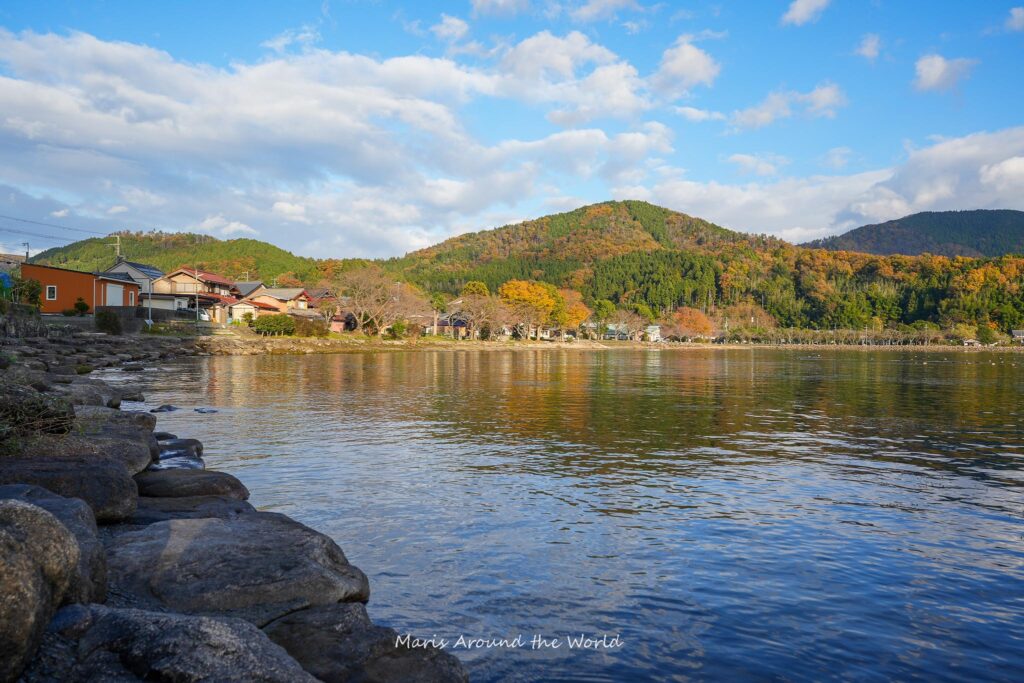
For those interested in learning what it’s like to cycle in Shiga and ride the Biwaichi Cycle Route, keep reading!
This post contains affiliate links, which means I may receive a commission if you purchase through my links, at no extra cost to you. Please read the full disclosure for more information.
Table of Contents
- Biking Around Lake Biwa, Cycling Vlog
- What is a Japan National Cycle Route?
- What to Bring
- The Route – Northern Section from Maibara to Makino (55km)
- Where to Stay
- Final Thoughts
- Other Things to Do in Shiga
Biking Around Lake Biwa, Cycling Vlog
I’m back on a bike cycling around part of Lake Biwa, Japan’s largest lake! Biwaichi is one of Japan’s six National Cycle Routes and covers approximately 200km. On this trip, I’ll be riding a 55km section from Maibara Station to Makino Station.
What is a Japan National Cycle Route?
Biwaichi is one of Japan’s 6 National Cycle Routes. So what is a National Cycling Route?
Japan’s National Cycle routes are designated by the government as routes “representative of Japan” and include a network of rest and cycling facilities, well-documented travel information, and easy-to-follow road markings and signage.
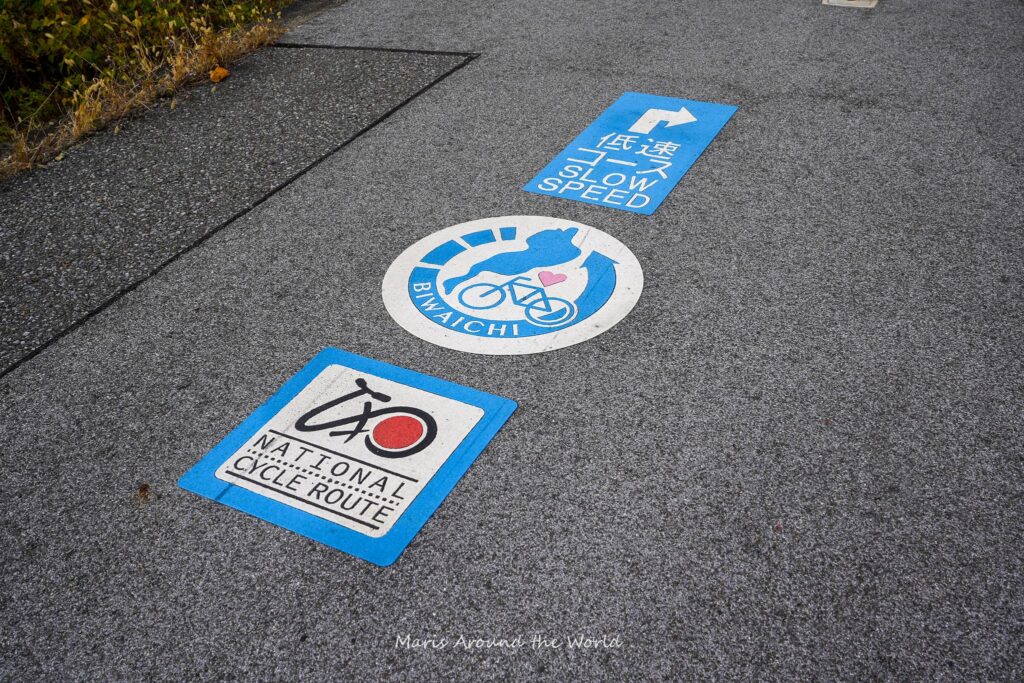
I’ve biked along two National Cycle Routes and they are pretty great! Just follow the blue line and enjoy the trip as many markers help guide the way.
These are the current 6 Japan National Cycle Routes:
- SHIMANAMI KAIDO: Hiroshima → Ehime, 70km (see my video here)
- Toyama Bay Cycling Route: Toyama, 102 km
- Tsukuba Kasumigaura Ring Ring Road: Ibaraki, 176km
- Pacific Cycling Road: Chiba → Wakayama, 1,487 km
- Tokapuchi400: Hokkaido, 403km
- Biwaichi: Shiga, 193km (see my video here)
What to Bring
Along with a change of clothes and my camera equipment, here are a few other things I brought along for the trip. Note that I traveled at the end of November so it was a bit chilly and there was rain.
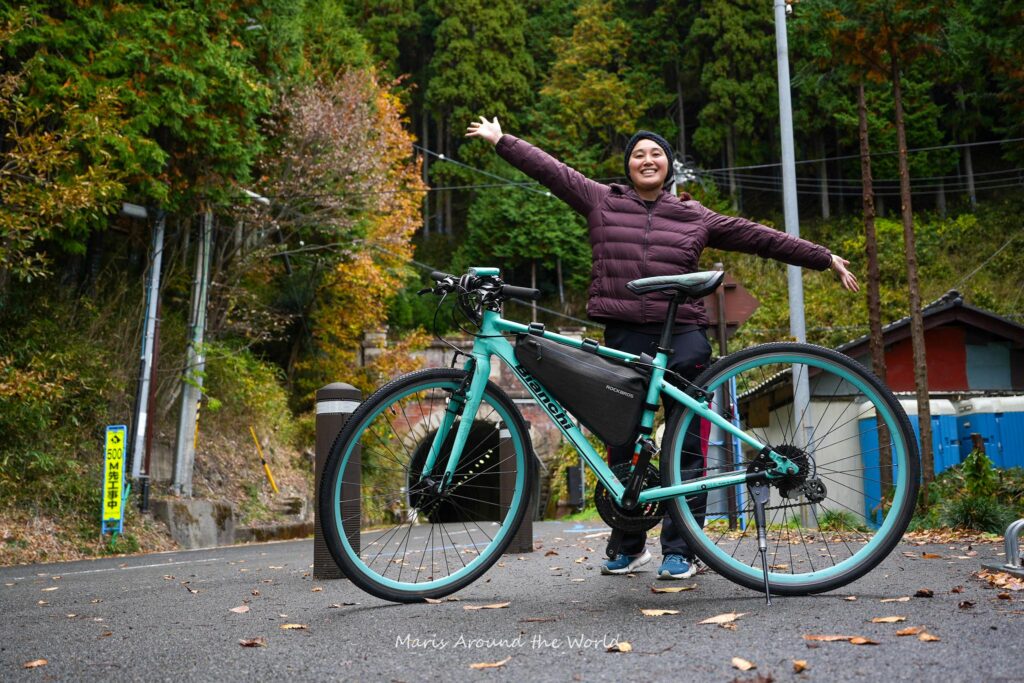
- Route map on phone – I studied this map before riding and marked points of interest on Google Maps so I could view the spots on my phone.
- Bike Frame Bag – to hold miscellaneous small items
- Puncture Kit – came with my bike rental
- Liquids
- Snacks
- Bike shorts – a little extra padding for the bum
- Gloves – since it was cold when I traveled
- Head covering – since it was cold when I traveled
- Rain jacket
- Backpack cover – in case of rain
The Route – Northern Section from Maibara to Makino (55km)
The full Biwaichi route runs 193 km around Lake Biwa and the mountains in the north. Advanced riders can theoretically complete the entire route in a single day, but I traveled at a more moderate pace, taking in the scenery and food along the way.
My one-day journey began in Hikone, from where I traveled to Maibara Station to pick up my bike. Once on the bike, I followed the Biwaichi Route to near Makino Station for a trip total of 55km.
This northern section has more hills and elevation compared to other parts of the route, but with this, you get nice stretches of quieter roads.
Hikone Accommodation → Hikone Station
I stayed the night in Hikone to explore Hikone Castle and the city the day before. (See my Hikone itinerary here). After checking out of my accommodation, (Honmachi Juku), I walked about 25 minutes to Hikone Station.


Hikone Station → Maibara Station
From Hikone Station, I rode the train 3 stops, (11 minutes) to Maibara Station.
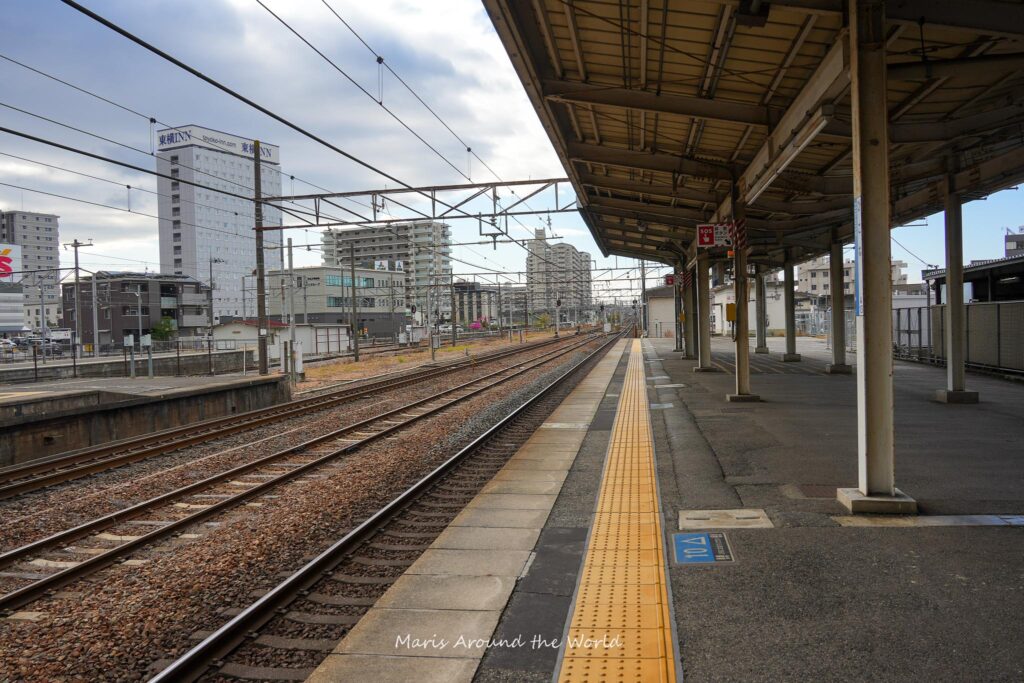

Breakfast at B. Lovanga
I grabbed a bite to eat at the bakery, B. Lovanga outside of Maibara Station. They had an assortment of bread, some sandwiches, and drinks. I ate my breakfast on a table outside.
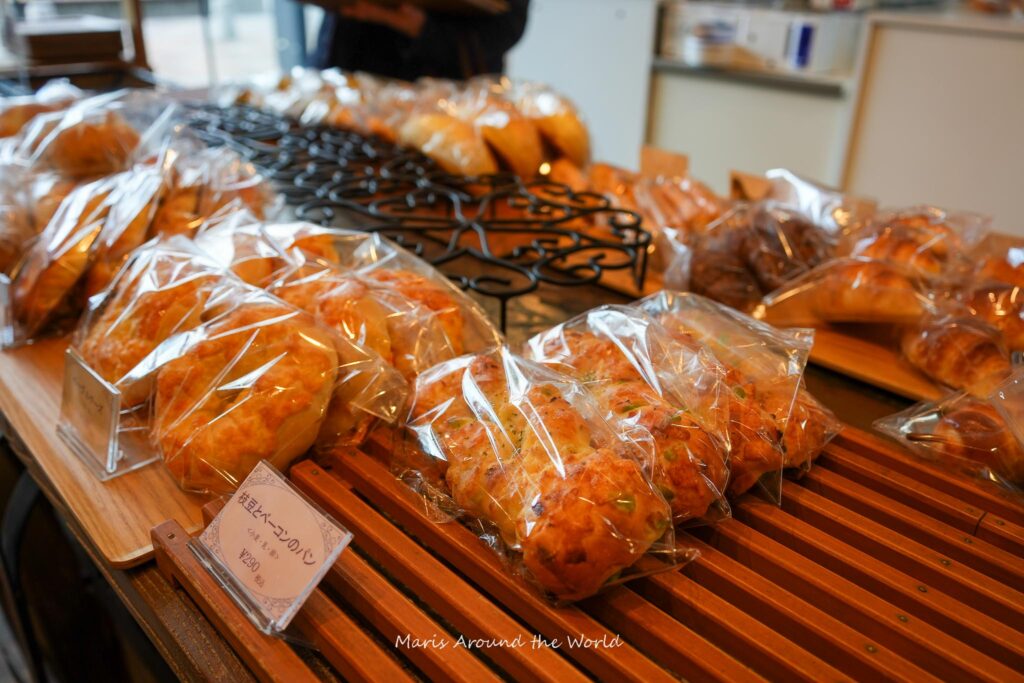
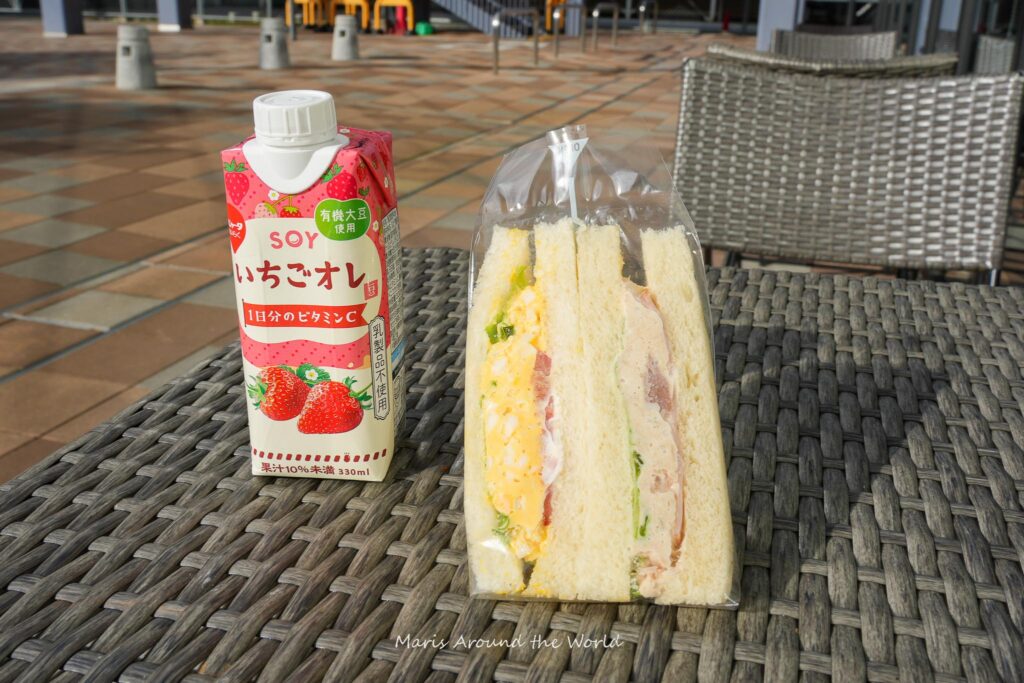
Maibara Cycle Station – Bike Rental
I made reservations for a crossbike from Maibara Cycle Station using their online reservation system (you’ll need to make a free account to use.).
Originally I had wanted a 9 am pickup, but that slot was full so I changed it to 10 am.
I showed the staff my reservation, and they showed me the bike. I also received a puncture kit to carry along the way, maps, a helmet, and an odometer.
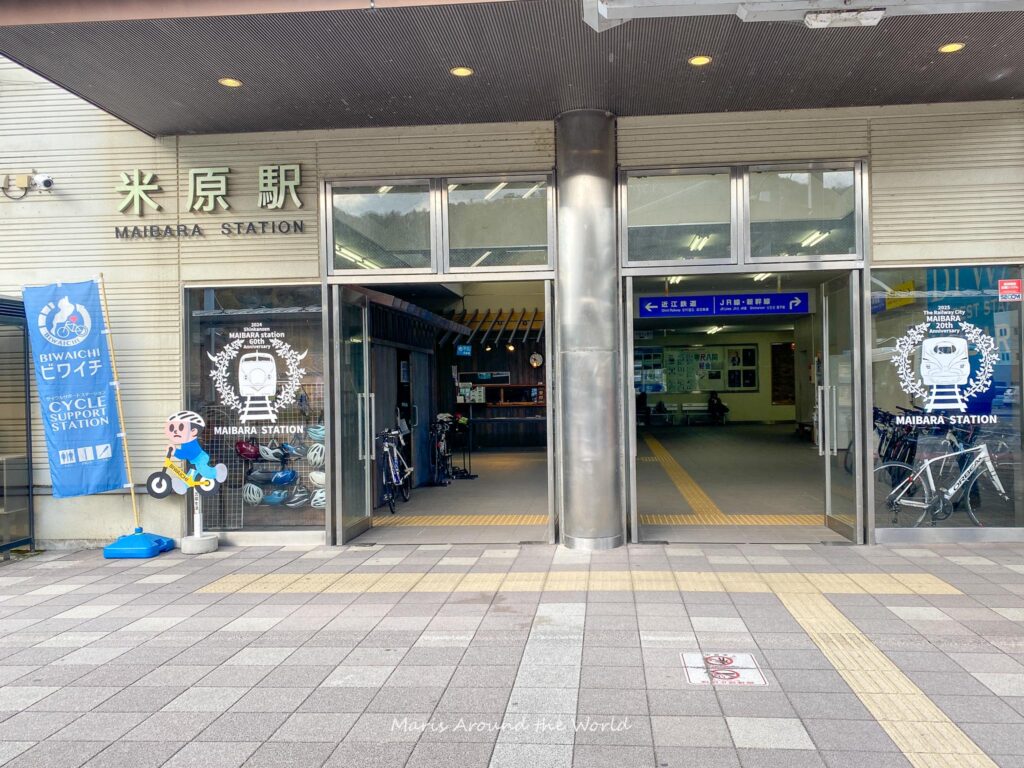
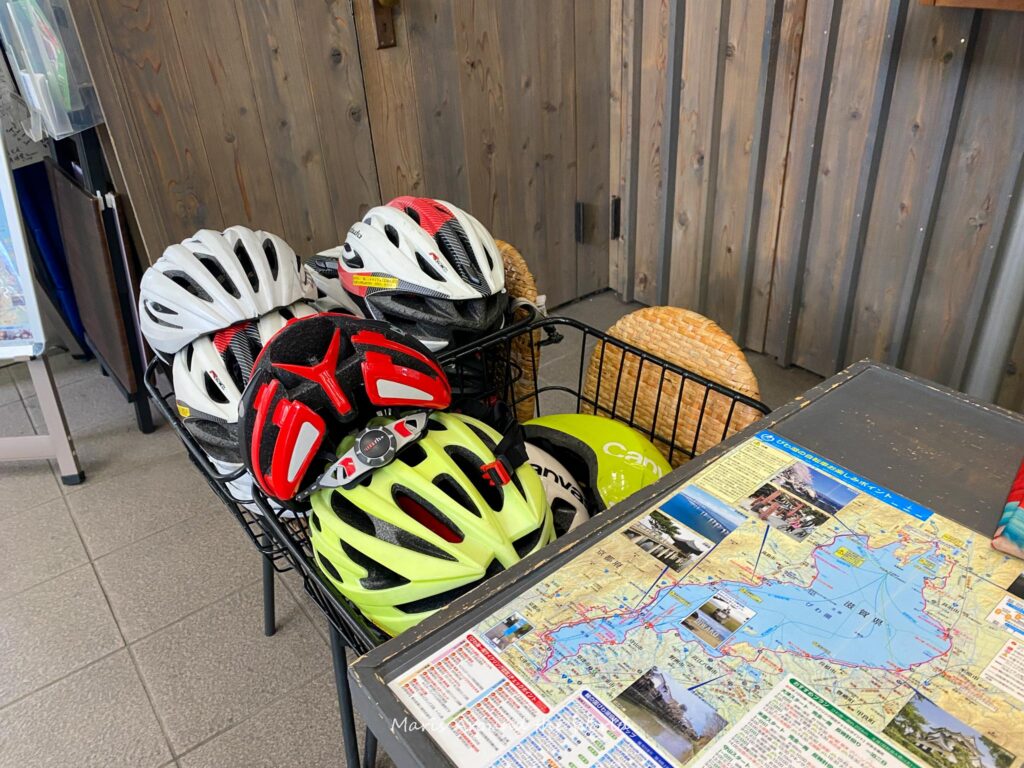
I had pre-arranged to ride only one way and return the bike to my hotel in Makino. This added an extra fee but gave me the flexibility to ride just a portion of the route and continue my trip by train afterward.
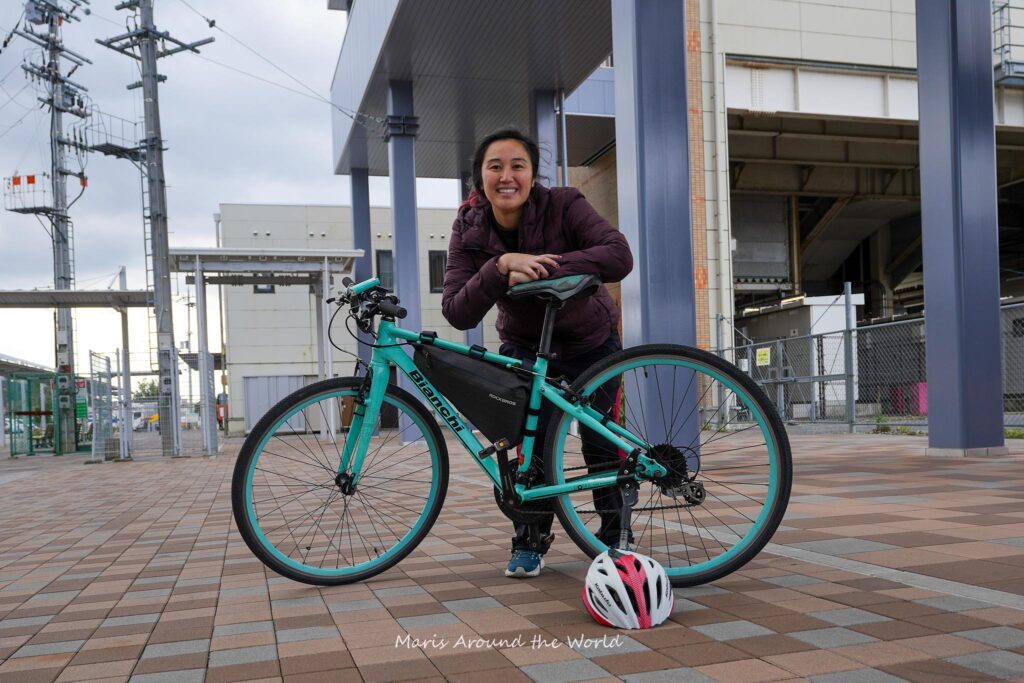
With my bike bag attached to the frame, I was ready to go!
Irie Bridge
After getting the bike, my first goal was to Irie Bashi, located right by the water. To get to the other side of the train tracks, I took a small path that went under the road.
It was super cold by the waters at Irie Bridge when I visited in late November and many clouds filled the sky. I hoped that I’d be lucky and avoid rain, but we know how my luck usually goes…
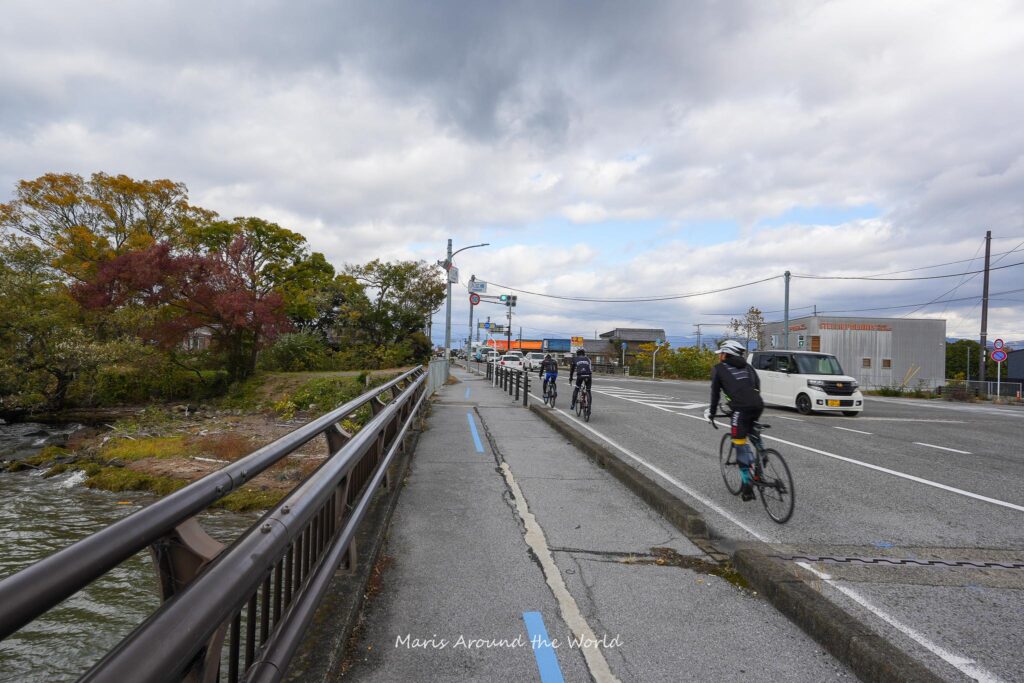
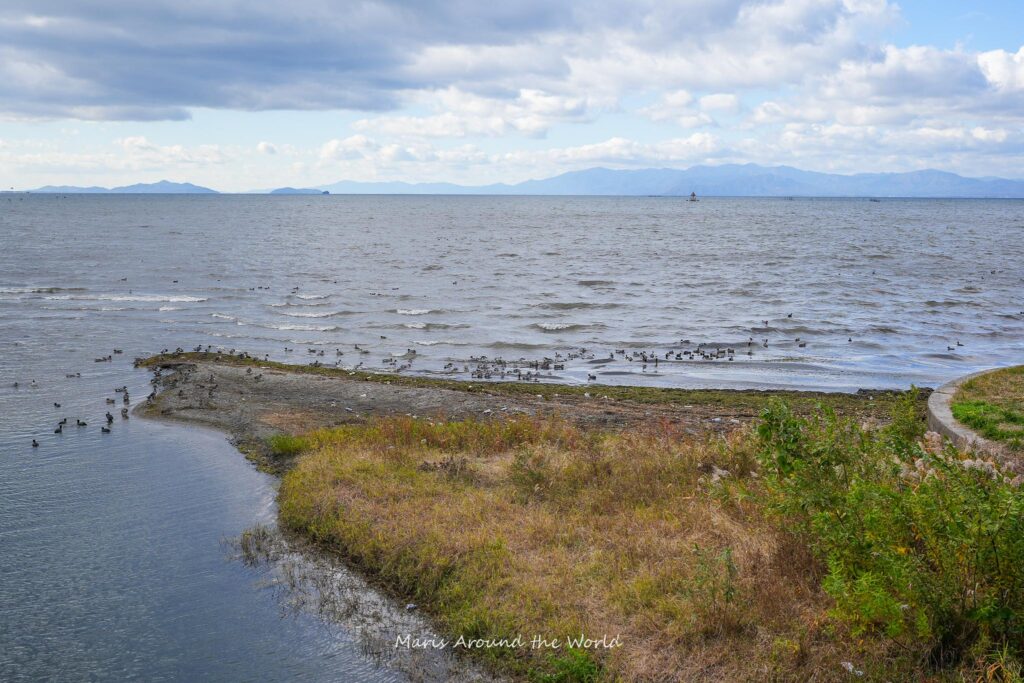
Lots of ducks sat in the rocky waters.
Nagahama Castle Historic Museum
I rode about 7.4 km to the Nagahama Castle Historic Museum. This part of the path was noisy since the road was frequented by many cars and trucks. I didn’t find it peaceful, but it was nice to see the lake waters to my left.
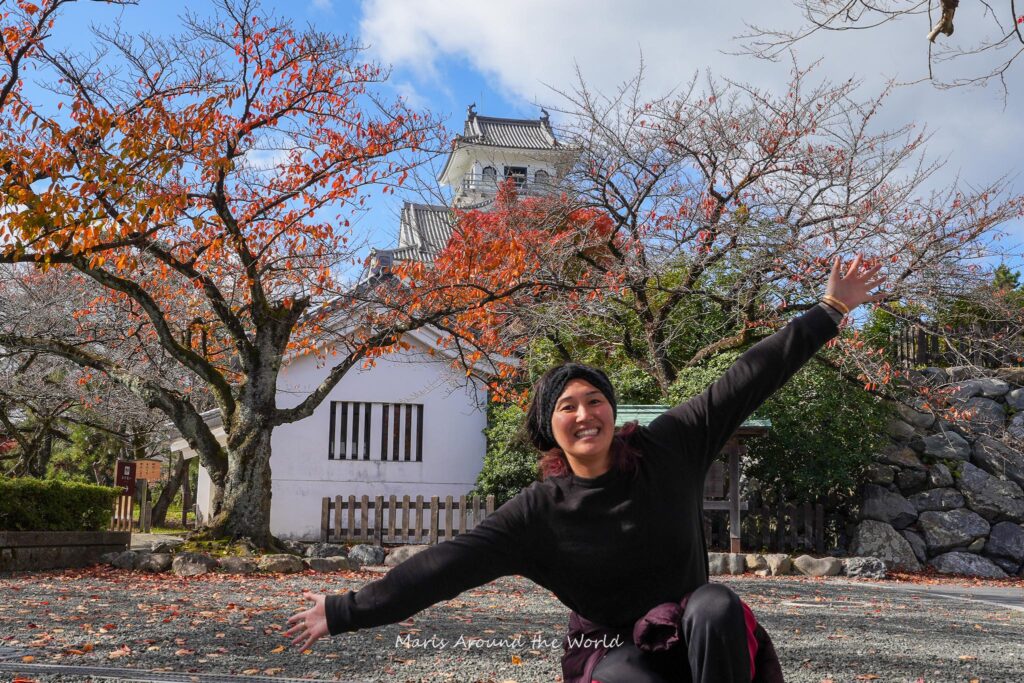
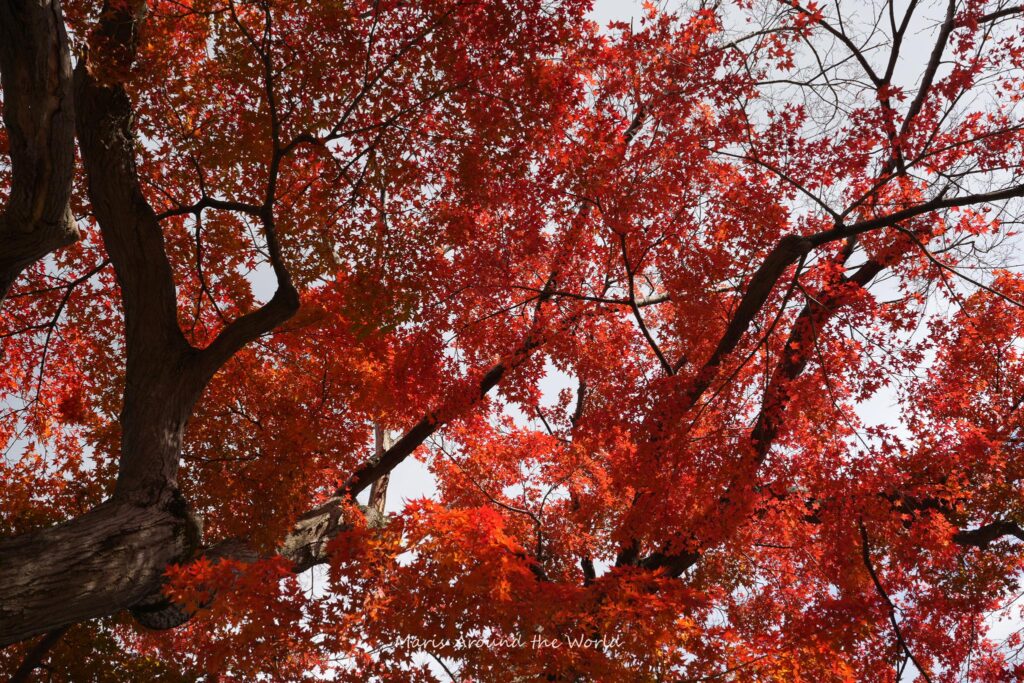
I didn’t enter the Nagahama Castle Historic Museum, but there were beautiful fall colors surrounding the museum. Nearby was Hō Park which looked like a neat place to visit.
Kohoku Mizutori Roadside Station
From the Nagahama Castle Historic Museum, it was 11.3 km to the Kohoku Mizutori Roadside Station. There were still many cars along the road, but the bike path was separated from the street which made it a bit nicer.
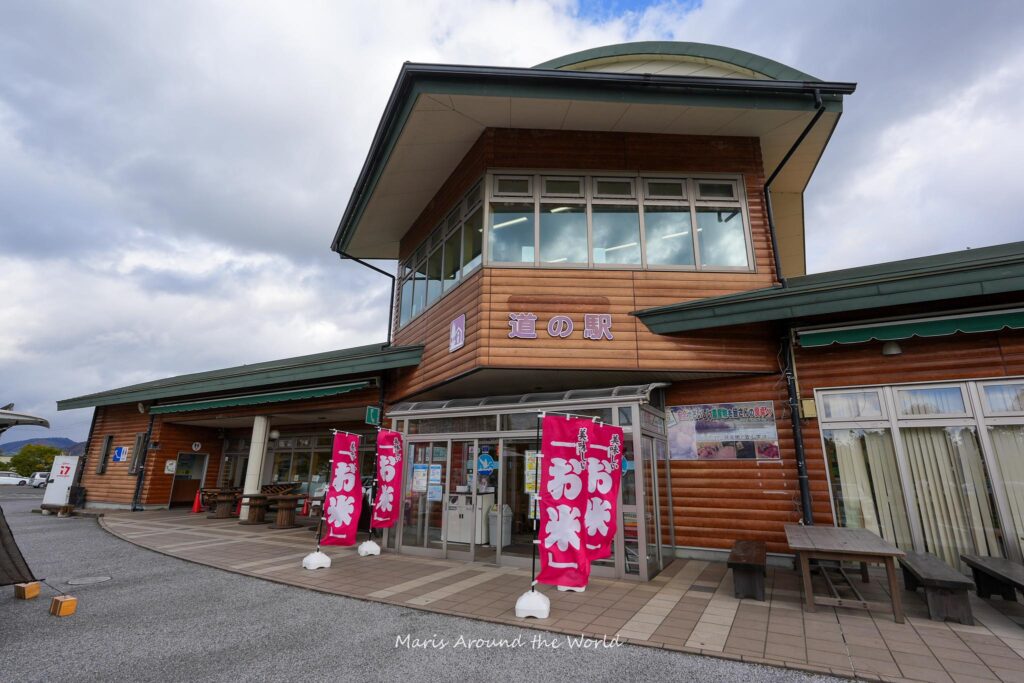

I got lunch at the roadside station and enjoyed a short rest. At this point, I was a little less than halfway done with the ride. There were a few meals to choose from including champon soup noodles, udon, soba, and rice bowls.
In addition to the restaurant, there was a market that sold local fruits, veggies, and souvenirs.
Bird Watching, Tunnels, and Mt. Shizugatake
After the roadside station, the road quieted down even more. I passed by many birdwatchers (this area is supposedly a famous birdwatching spot) and biked through my first tunnel.
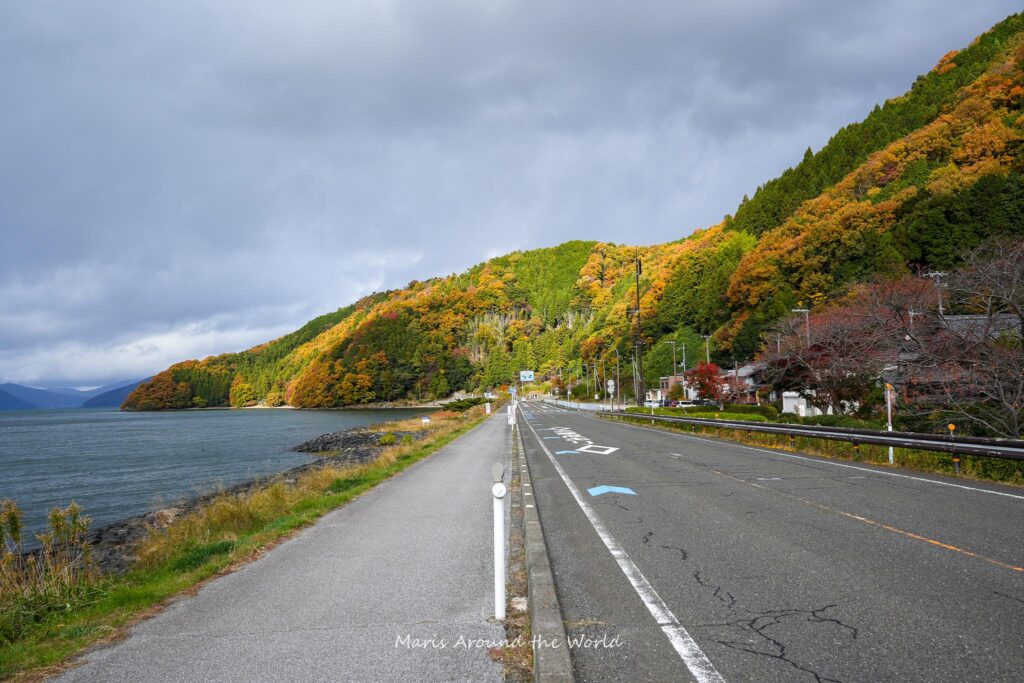
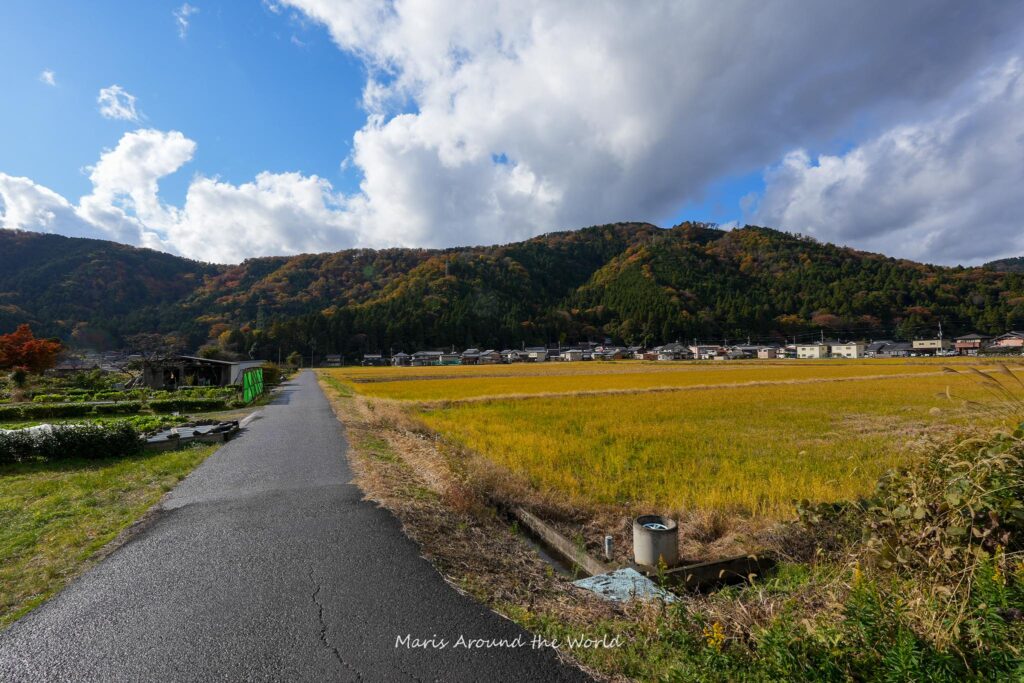
The path followed a small stream and was finally completely separate from the street. I endured a bit of rain but enjoyed the peaceful atmosphere. There were nice views of the mountains and bright yellow fields.
The first mountain climb was up Mt. Shizugatake which was a 7% grade for 900 meters. I was able to switch down gears and keep pedaling slowly but surely.
Mountain Rest Stop
There was a small rest stop with a single bench outside a tunnel near the top of the mountain path. From here, Lake Biwa peeked out behind the trees. After a small break and photo, I headed down the mountain. The view was so nice and I enjoyed the cool breeze as I zoomed down.

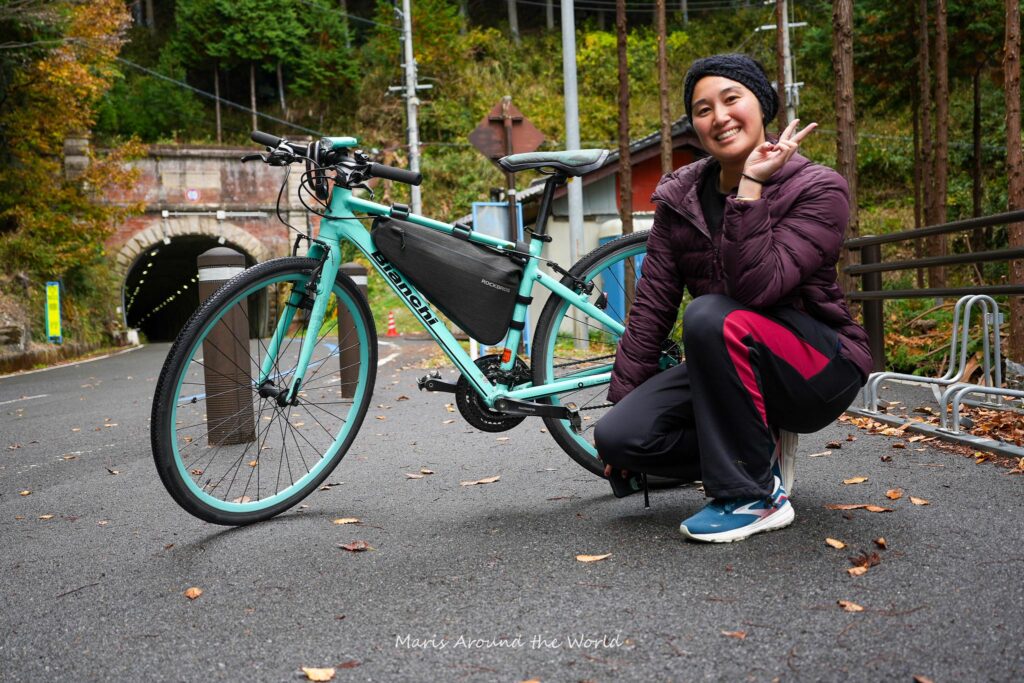
Northern Lake Biwa
One mountain down, one more to go!
This next section of the ride had fewer cars than before and it was nice to see the lake from a different point of view especially with the fall colors on the mountains. There were many beautiful places along the route here.

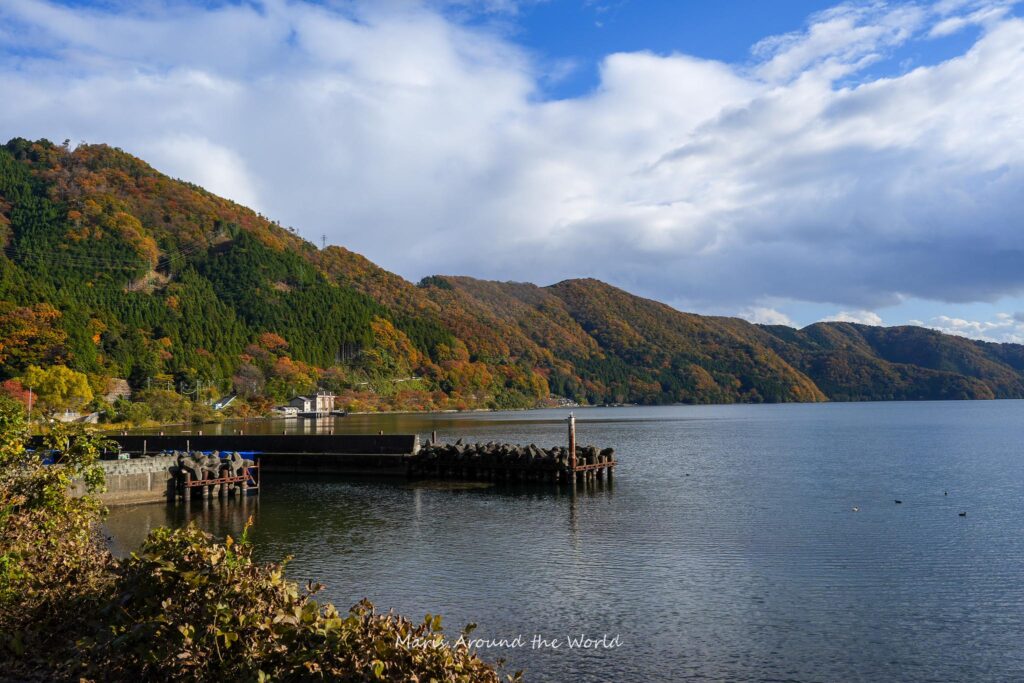
Tsukide Pass
The second mountain climb was Tsukide Pass with an 8% incline for 900 meters. I was able to slowly climb the mountain on low gear.
After the pass, I rode next to a field where I spotted a few wild monkeys. Luckily they ran away from me so we had no trouble.
Before getting to Makino, there was a long chain of short tunnels. Finally, I made it to Makino!


Grand Park Hotel Okubiwa Makino
I made it to my stay for the night and where I would return my bike, the Grand Park Hotel Okubiwako Makino!
There are not many accommodation options in Makino, so if you choose to stay here, make your bookings in advance.
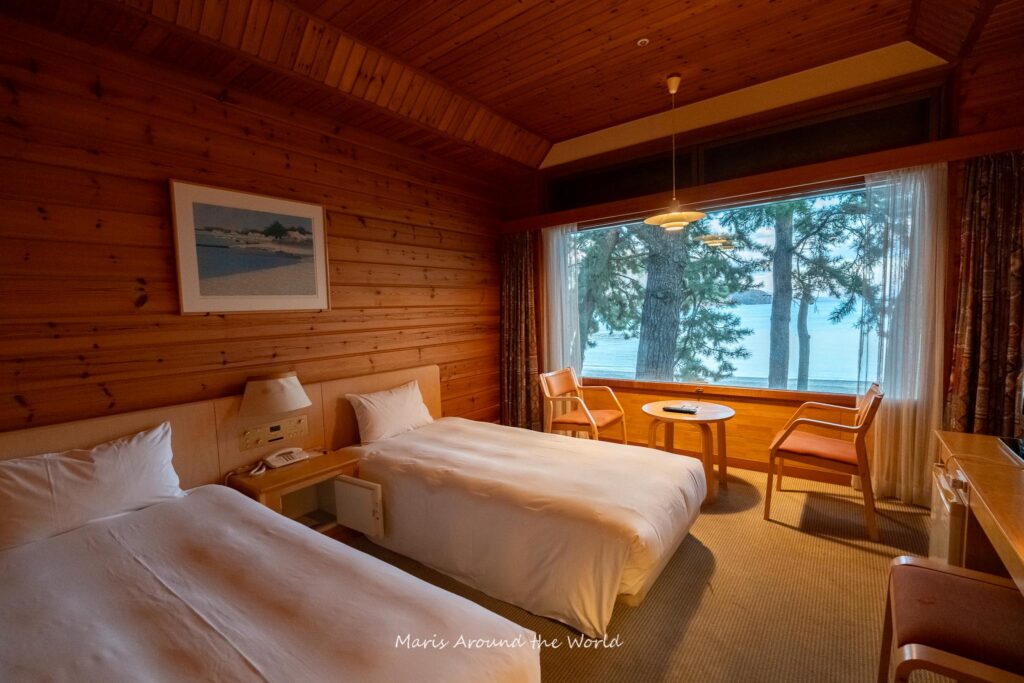
I enjoyed a nice shower (unfortunately there were no onsens in the hotel or nearby), had a hot dinner, and slept sooooo well.
Avenue of Metasequoias
The next day after breakfast, I checked out of the hotel and made my way by taxi to the Avenue of Metasequoias. Since it was fall, I got to see the 2.4km golden yellow path of trees. It was a stunning sight!


The view changes dynamically with the seasons and is said to be beautiful at other times of the year too!
I took the bus to Makino Station (7 min) and from there headed back to Kyoto Station. My short Biwaichi trip was complete!
Where to Stay
I started my trip in Hikone where I had stayed the night at Honmachi Juku, a traditional Japanese guesthouse. There were private rooms of varying sizes, shared showers and restrooms, and a lounge. I recommend this place for solo travelers or couples looking to experience a more traditional Japanese stay.


In Makino, I stayed in a large hotel right by Lake Biwa, the Grand Park Hotel Okibiwako Makino.

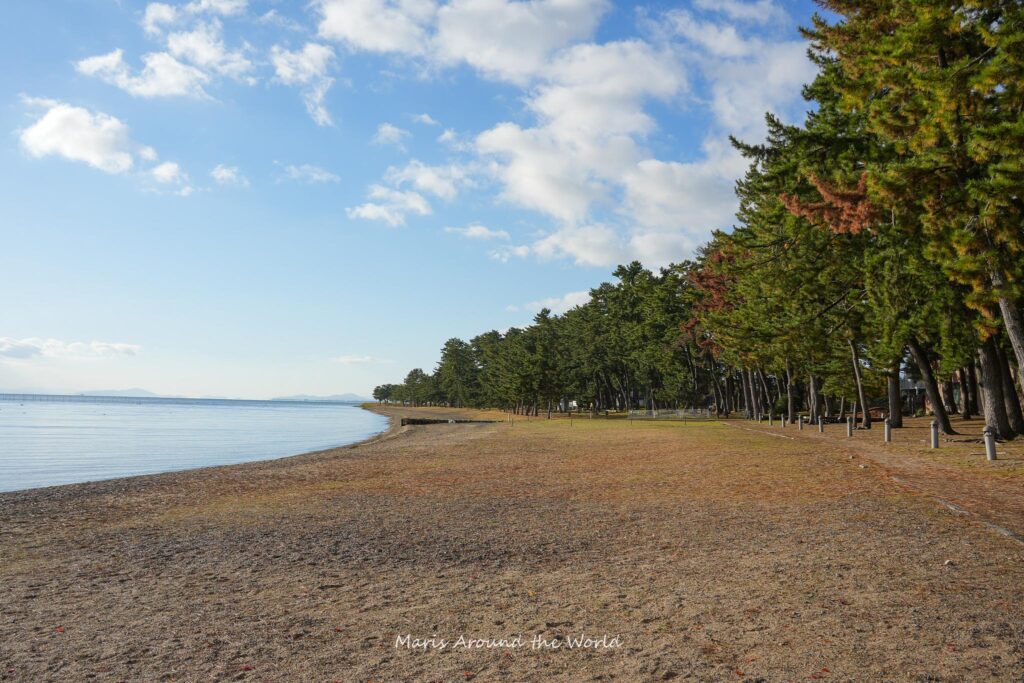
The rooms had a cabin feel and looked out onto Lake Biwa (although the view was obstructed by many trees). Dinner and breakfast were included in the stay, but they weren’t anything to write home about. Overall it was a comfortable stay and with limited options, it checks the boxes of food, a nice bed, and a hot shower.
Final Thoughts
On this trip, I didn’t ride all of Biwaichi, but I did experience a good portion of the route along the more mountainous and quieter northern section.
The start of the journey wasn’t my favorite as the road was very noisy and close to passing cars, but once I got further away into the quieter areas, I found it more enjoyable.
I was surprised by how cold it got next to the lake, so I was thankful for my gloves and light-down jacket.
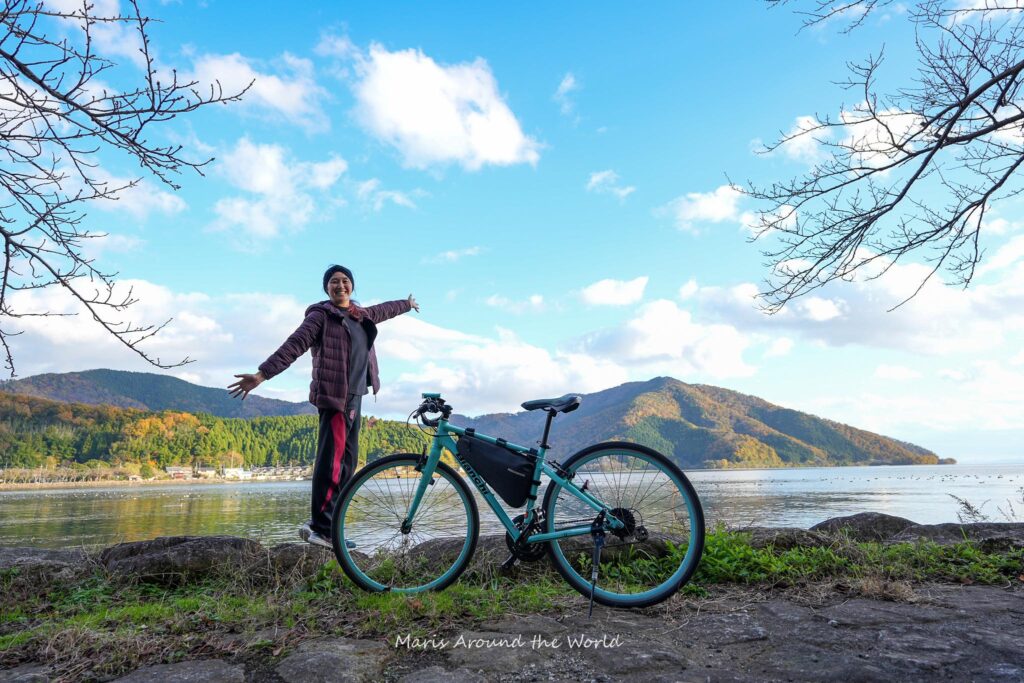
If I had to choose between the other National Cycle Route I’ve ridden, I’d say the Shimanami Kaido route is a better choice for first-time riders. It is shorter so it can be completed in fewer days, has more fun food options and spots to see along the way, and has less difficult inclines.
Have you biked in other parts of Japan? If so, where have you enjoyed visiting? Let me know in the comments below!
Other Things to Do in Shiga
Looking for other things to do in Shiga prefecture? Check out this list to jump-start your planning.
Explore Hikone, Shiga’s Castle City
In addition to seeing Hikone’s famous Castle, there are neat museums and the city’s adorable cat! Check out this guide for what to do Hikone!
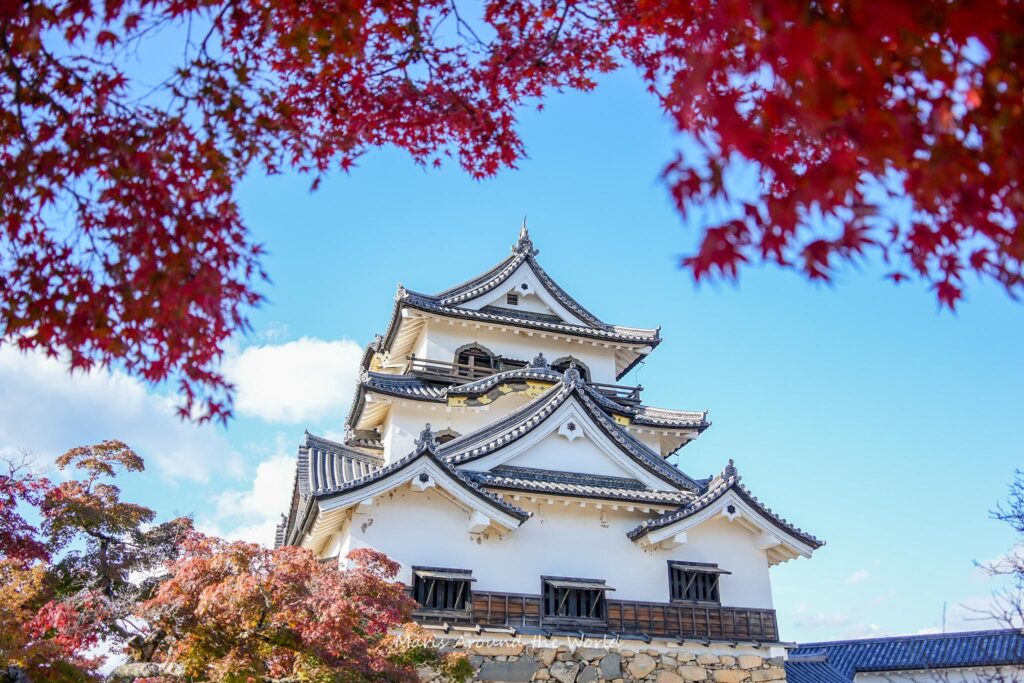
Savor Omi Wagyu Beef
Meat lovers will want to try Omi Wagyu! Omi beef is a type of Japanese cow that is prized for its tender and smooth taste. Some say it is one of Japan’s top three Wagyu brands alongside Kobe beef and Matsuzaka beef.
While Omi beef can be enjoyed grilled, one of the popular ways to enjoy this decadent cut of meat is sukiyaki style. Sukiyaki is a dish that is prepared in a hot pot. Thin slices of meat are slowly simmered in a sweet and savory sauce along with veggies and other ingredients. The meat is then dipped into a bowl of beaten raw egg which gives it a silky, creamy finish.



I had a fantastic sukiyaki experience at Sennari Tei Kyara in Hikone.
Quaint and Historic Omihachiman
Located on the Eastern side of Lake Biwa south of Hikone is Omihachiman, a historic merchant town with small canals.

Take a leisurely boat ride in the water, walk to Himure Hachimangu Shrine, or take the cable car up to the Hachimanyama Castle Ruins

Enryaku-ji Temple and Mt. Hei-zan
Enryaku-ji Temple is located on Mt. Heizan and in the winter, the landscape is incredible! You can access the temple via cable car or car.

Soak and Relax at Ogoto Onsen
Ogoto Onsen is a hot spring area that is said to have been established by Saicho, the founder of Enryaku-ji temple (mentioned above). There are several Japanese inns (ryokan) in the area that provide luxurious stays, access to onsens, rooms with open-air baths, and views of Lake Biwa.
I had a nice stay at Biwako Hanakaido Ryokan. My room had a view out onto the Lake, came with dinner and breakfast, and there were several baths to enjoy.


If you are looking for a more casual time, you can head to the Spa Resort Ogoto Agaryanse. This is a public bath that has gender-divided, indoor and outdoor baths, saunas, optional hot stone rooms, lounging spaces, and restaurants.
There are some great views from different parts of the resort complex.
You can reach the Spa Resort by taxi or bus from Ogoto Onsen Station. Ogoto Onsen is just 20 minutes from Kyoto Station, so it makes for a perfect place to visit if you are looking for a nice hot spring trip outside of Kyoto City.


Wake Up to The Sunrise – Biwako Hotel
You can enjoy a beautiful sunset from many of the hotels around Lake Biwa. I enjoyed an especially incredible sunrise from the Biwako Hotel. Look at how beautiful the sunrise was over the lake water!

Looking to bike in other parts of Japan? Check out these blogs for more cycling trips!
- Solo Biking the Shimanami Kaido: A Complete Guide
- Biking in Itoshima: Sunset Road and Cafes by the Sea
- Biking Around Sakurajima: A Complete Guide
The form you have selected does not exist.
